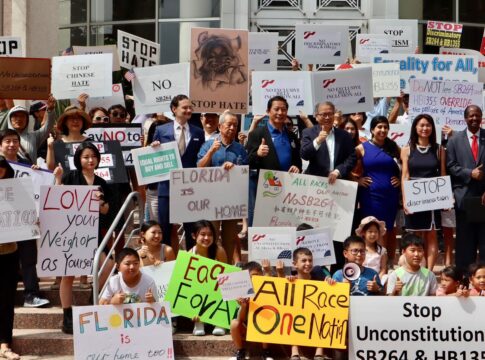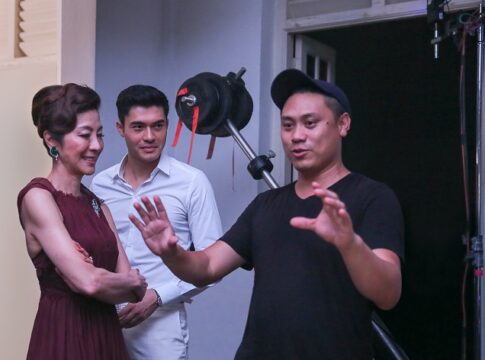By Doctor Dawn Kamila Brown
What do you think of when you consider childhood? Do you go back to an idealistic time of pure innocence?
Many of us adults look at those childhood years as ones spent yet uncorrupted by the realities of our world. Yet many others can remember growing up in a vastly different way. And many of today’s children also have the stark realities of society to contend with as they come inside, breathing heavily from running around outside, to see a man’s final moments, crying out “I can’t breathe,” on the news.
For children of color, hearing these cries and witnessing other tragedies in their own lives is making an impact. Those growing up today will likely not remember a happy carefree period of life, but the time when they first became acquainted with racial trauma.
Of course, today’s generation is not unique. Racial trauma has been a part of the life experience of people of color in America all the way back to the beginning.
LATEST STORIES
A History of Racial Trauma
The roots of racial trauma can go back deep into the past for a family in America today. It may have begun on the transatlantic slave trade, in the racism that fueled the Chinese Exclusion Act, or any other of the American tragedies that history holds.
For people of color, growing up in America has pretty much never been a purely pleasant experience, and that generations-long trauma may still be having an impact today.
How can today’s Black children see themselves as strong and as capable of great accomplishments as anyone else when for generations, they’ve been told they’re anything but equal? How can any child of color feel safe and free to pursue their dreams when the society they live in has long given only hatred to people like themselves? And how, now, will today’s children move forward with mental strength after hearing “I can’t breathe” on their television screens?
The Impactful Events Taking Place Today
The long history of racial trauma on the American population is still being written. As we can very evidently see in headlines that continue to come out, it isn’t over.
From everyday microaggressions to the death of George Floyd, instances of racial trauma are making an impact on children and adults alike. These are what children will remember from their childhoods.
Racial Trauma on Asian Americans
Asians in America have long been assigned the myth of “model minority”. They were held up as ideal examples of how a minority race can reach the perfect standards set by our society. Due to this historic role as the “good” minority, it can be easy to overlook the hardships and discrimination that Asian Americans do still face.
Growing up, it is not uncommon for Asian children to face stereotypes, slurs, and other instances of racism. Their racial trauma may not often be seen due to instead seeing members of this race as a success and as an ideal to strive for, yet the trauma is still there.
Recent events of hatred and violence against the Asian community across the United States have brought to light the prevalent racism against this group. Events such as the mass shooting in Atlanta on March 16 have added to the collective racial trauma on the youngest generation of Asian Americans.
They are seeing the hate and the horror and this is not without its effects.
Racial Trauma in the Black Community
Of course, ongoing examples of racial trauma in the Black community can also be clearly seen continuing into this day. However much gladness we can find in the outcome of the Derek Chauvin trial, the death of George Floyd speaks to our ongoing reality of racism and the loss of Black lives. It speaks to a message of inferiority that is still being given to Black children growing up in this society.
The newest generation of Black Americans are currently facing televised tragedies, unavoidable examples of prejudice in their daily lives, and so much more that will leave its impact. We cannot shield our children from what is taking place because this is the reality they will have to live in.
But the racial trauma they gain today will continue to play a role in their mental health years on from now.
A Childhood That Will Leave an Impact
Youth does not protect people from the damage brought by racism. Children are taking in these events that surround them, seeing and hearing it all, and it has an impact on their mental health. One study out of Cambridge University even found that the effects of racism can be felt in infancy, with Black babies showing higher levels of cortisol than White babies.
The more that racial trauma builds up within these children’s lives, the greater an impact we will see. Damaging effects on the mental health of young people of color is the final result.
How Continuous Racial Trauma Affects Children
The impact of this racial trauma is on the mind, with a contribution to anxiety disorders, depression, and other mental health issues. It also makes its impact on the body, with stress capable of bringing on cardiovascular disorders and diseases. With it all starting in childhood, the outcomes can be truly harmful.
Even these witnessed traumas can have a lasting traumatic impact on children as they look at George Floyd and see a man that looks like their father, Ahmaud Arbery as an uncle, Xiaojie Tan of the Atlanta mass shooting as their mother, or the elderly Asian women who have faced violence as someone that looks like their grandmother. Living though this vicarious racism can be enough to cause kids serious mental distress and even lead to PTSD.
When people of their race are hurting, these children hurt too.
RELATED: Anti-Asian hate and abuse of African American
Looking Out for the Children in Our Communities
Racism and the racial trauma that it brings on children is not just going to go away. We can start to make steps in the right direction towards justice, but our children’s mental health remains in jeopardy today. The children of color that are hurting need to be a priority for all of us.
So, what do we do? We look out for the children of color in our communities. Those that work with children, such as teachers, should look out for signs of mental distress and understand how they can best address these. Parents should have the necessary conversations and be prepared to give their child whatever help they may need, including professional support. None of us can overlook the impact that racial trauma has on today’s youth.
Double-board certified Child, Adolescent, Adult and Sports Psychiatrist, Dr. Dawn Kamilah Brown, is an internationally recognized two-time #1 best-selling author, Content Creator, and Keynote/Corporate Speaker. She is also the Founder and CEO of Mental Healthletics™ a concierge practice and serves as the company’s Sports Psychiatrist for elite (and retired) athletes of college and national sports organizations. Dr. Dawn is also the Founder and Chief Executive Officer of the ADHD Wellness Center and has two private practice locations in Texas, with a growing virtual presence. She serves as a contract psychiatrist for 5 clinics; supervises 5 nurses in 2 states; and is licensed in 6 states.
AsAmNews has Asian America in its heart. We’re an all-volunteer effort of dedicated staff and interns. Check out our new Instagram account. Go to our Twitter feed and Facebook page for more content. Please consider interning, joining our staff, or submitting a story or making a contribution.









